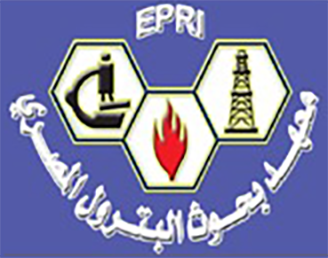Article Type
Research Paper
Highlights
- Gamma-ray normalization was crucial for ensuring the consistency and accuracy of gamma-ray measurements across different wells in the Abu Roash Formation, considering variations in instruments and environmental conditions. This process enhanced the identification of shale zones and the accuracy of Radiogenic Heat Production (RHP) calculations.
- The distribution and type of clay minerals, such as illite, montmorillonite, and mixed-layer clays, were identified across various members of the Abu Roash Formation. This analysis provided insights into the reservoir's quality, with specific focus on the impact of clay minerals on porosity, permeability, and wellbore stability.
- Petrophysical evaluations identified key oil-bearing zones within the Abu Roash Formation, characterized by low gamma-ray response, high porosity, and high resistivity. These zones were confirmed through conventional well log analysis across the KH-17, KH-21, and KH-24 wells.
- The thorium-normalized DRAD curve was employed to predict oil-bearing zones. The curve showed a correlation with hydrocarbon saturation curves, with a percentage of agreement, highlighting its effectiveness as a predictive tool.
- A correlation was found between the DRAD curve and hydrocarbon saturation, with a non-agreement percentage as low as 12-15% in different wells, further validating the reliability of the DRAD curve in hydrocarbon zone identification.
- Radiogenic Heat Production Curve (RHPg), based on gamma-ray log, effectively differentiated reservoir rocks from source rocks in the Abu Roash Formation. Zones with RHPg values ranging from the mean value to the mean value plus one standard deviation value were identified as reservoir rocks. Once RHPg values exceeding the standard deviation were identified as source rocks.
- The study achieved over 85% agreement between radioactive techniques and conventional well log data, confirming the utility of thorium normalization and RHP techniques in identifying hydrocarbon-bearing zones and distinguishing between reservoir and source rocks in the Abu Roash Formation.
Abstract
Investigations of radioactivity in oil production have been ongoing since the early 20th century, with gamma radiation utilized for petroleum prospecting from the 1950s onwards. Accurate delineation of hydrocarbon-bearing zones is crucial for optimizing exploration processes and reducing operational risks. This research is motivated by the need to evaluate the effectiveness of radioactive-based techniques, such as thorium normalization and radiogenic heat production (RHP), as reliable alternatives or complements to conventional methods. The study explores their application to identify hydrocarbon-bearing zones and distinguish reservoir and source rocks in Abu Roash Formation at Khalda oil field in Egypt's Western Desert. RHP, derived from the breakdown processes of thorium, uranium, and potassium isotopes, is a significant contributor to surface thermal energy transfer within the Earth's outer layer. This investigation employs a thorium normalization technique to correlate and compare with conventional well log analysis. Gamma-ray spectrometry and total gamma ray (GR) logs are utilized to identify potential oil reservoirs by applying RHP calculations. Results highlight zones of hydrocarbon presence, emphasizing the efficiency of these methodologies in delineating oil-bearing regions. The agreement ratio between radioactive techniques and conventional well log analysis indicates that the radioactive logs can be used to delineate the hydrocarbon bearing zones with an ensuring percentage of 85%.
Keywords
Thorium Normalization; Radiogenic Heat Production (RHP); Hydrocarbon bearing Zones; Abu Roash Formation; Khalda Oil Field; Gamma-Ray Log
Recommended Citation
Al-Alfy, Ibrahim M.; Ghoneimi, Ashraf; Kamel, Mohamed A.; and Nabih, Muhammed
(2025)
"Integrating Thorium Normalization and Radiogenic Heat Production (RHP) for Distinguishing Reservoir and Source Rocks in Abu Roash Formation, Western Desert, Egypt.,"
Egyptian Journal of Petroleum: Vol. 34
:
Iss.
1
, Article 3.
Available at: https://doi.org/10.62593/2090-2468.1060
Creative Commons License

This work is licensed under a Creative Commons Attribution-NonCommercial-No Derivative Works 4.0 International License.






